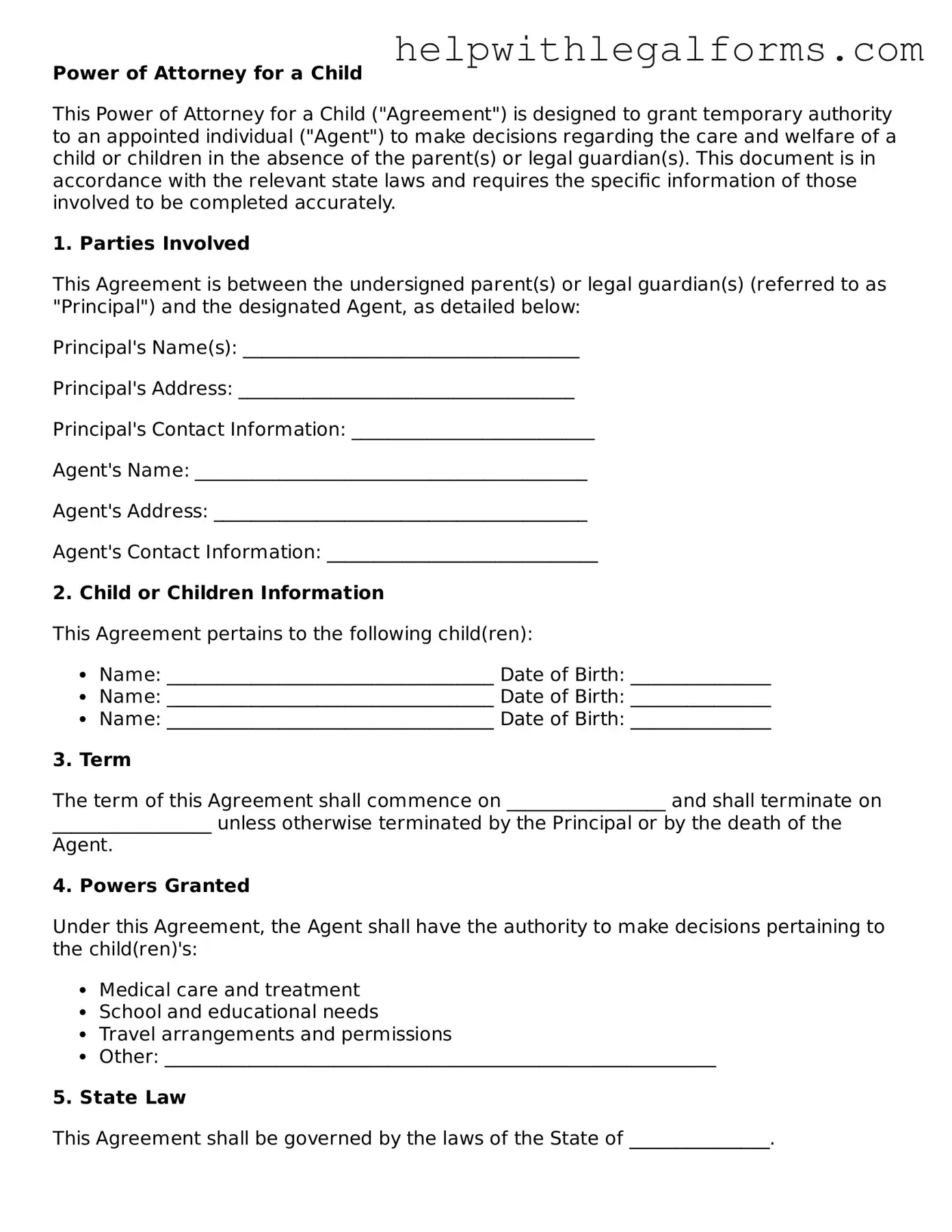Power of Attorney for a Child
This Power of Attorney for a Child ("Agreement") is designed to grant temporary authority to an appointed individual ("Agent") to make decisions regarding the care and welfare of a child or children in the absence of the parent(s) or legal guardian(s). This document is in accordance with the relevant state laws and requires the specific information of those involved to be completed accurately.
1. Parties Involved
This Agreement is between the undersigned parent(s) or legal guardian(s) (referred to as "Principal") and the designated Agent, as detailed below:
Principal's Name(s): ____________________________________
Principal's Address: ____________________________________
Principal's Contact Information: __________________________
Agent's Name: __________________________________________
Agent's Address: ________________________________________
Agent's Contact Information: _____________________________
2. Child or Children Information
This Agreement pertains to the following child(ren):
- Name: ___________________________________ Date of Birth: _______________
- Name: ___________________________________ Date of Birth: _______________
- Name: ___________________________________ Date of Birth: _______________
3. Term
The term of this Agreement shall commence on _________________ and shall terminate on _________________ unless otherwise terminated by the Principal or by the death of the Agent.
4. Powers Granted
Under this Agreement, the Agent shall have the authority to make decisions pertaining to the child(ren)'s:
- Medical care and treatment
- School and educational needs
- Travel arrangements and permissions
- Other: ___________________________________________________________
5. State Law
This Agreement shall be governed by the laws of the State of _______________.
6. Signatures
This Agreement must be signed by the Principal and the Agent in the presence of a notary public who will also sign and seal the document, thereby affirming the identities of all the signatories.
Principal's Signature: _______________________________ Date: _______________
Agent's Signature: _________________________________ Date: _______________
Notary Public's Signature: ___________________________ Date: _______________
Notary Public's Seal:
This document is not a substitute for legal advice and might require customization to comply with the specifics of your situation or the laws of your state. Consult a lawyer if you have questions.
